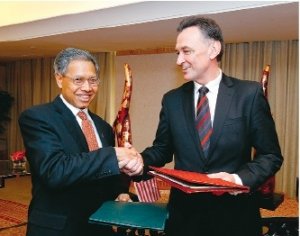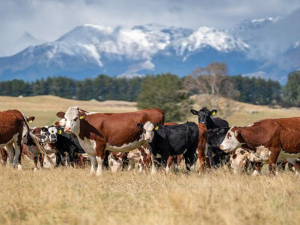The deal, signed after seven years of negotiations, allows a liberalised licensing arrangement for Australian liquid milk exporters and allows access for higher value retail products.
It guarantees Australian wine exporters the best tariff treatment Malaysia gives any country. It also allows open access arrangements from 2023 for Australian rice with all tariffs eliminated by 2026.
The National Farmers’ Federation says the trade deal will improve international market access for Australian agricultural goods.
“After seven years of negotiation, the NFF is under no illusion of how challenging it has been to complete this FTA with Malaysia,” NFF vice president Duncan Fraser says.
The FTA will fill a number of gaps within the ASEAN-Australia-New Zealand FTA (AANZFTA).
“Protectionist sentiment over agricultural goods is rife and growing across the globe, so in this context it is pleasing Australia has managed to forge an agreement with Malaysia that has dealt with some sensitive agricultural issues not effectively covered by AANZFTA,” says Fraser.
“While under the AANZFTA agreement most of Australian agriculture’s key interests had tariffs bound at zero, dairy and rice are two sectors where incremental market access improvements have been negotiated under the Malaysian FTA.
“This trade deal was also particularly important for sectors such as dairy that have been facing a competitive disadvantage in Malaysia compared with New Zealand which already has a completed FTA with Malaysia in place.”
The FTA also signals some administrative benefits for Australian agricultural exporters through streamlining of rules-of-origin declaration processes and improved marketing arrangements for certain commodities.
The Malaysian market is worth about A$1 billion in Australia agricultural exports – including being its fourth-largest sugar export market and fifth-largest wheat export market.
With an annual economic growth at about 5%, Malaysia forms an important part of the ‘Asian Century’ story and the opportunity this presents for Australian agricultural producers, says Fraser.
Despite the completion of this agreement, much remains to be done for Australia’s farmers to tap into the full potential of the Asian region and beyond.
He says the NFF will now throw its attention towards ensuring agriculture remains front and centre in completed FTAs with South Korea, Japan, China and Indonesia as immediate priorities.
“These are all markets with enormous growth opportunities and where significant barriers to trade in agriculture still exist, not only through tariffs that restrict trade but also through technical or so called ‘behind the border’ restrictions.”
The FTA was signed on May 22 in Kuala Lumpur by Australia’s Trade and Competiveness Minister Craig Emerson and his Malaysian counterpart Mustapa Mohamed.
Emerson says Australia will be as well-positioned in the Malaysian market as Malaysia’s closest trading partners in ASEAN, and in some cases better. The FTA will guarantee tariff-free entry for 97.6% of current goods exports from Australia once it enters into force. This will rise to 99% by 2017.

















